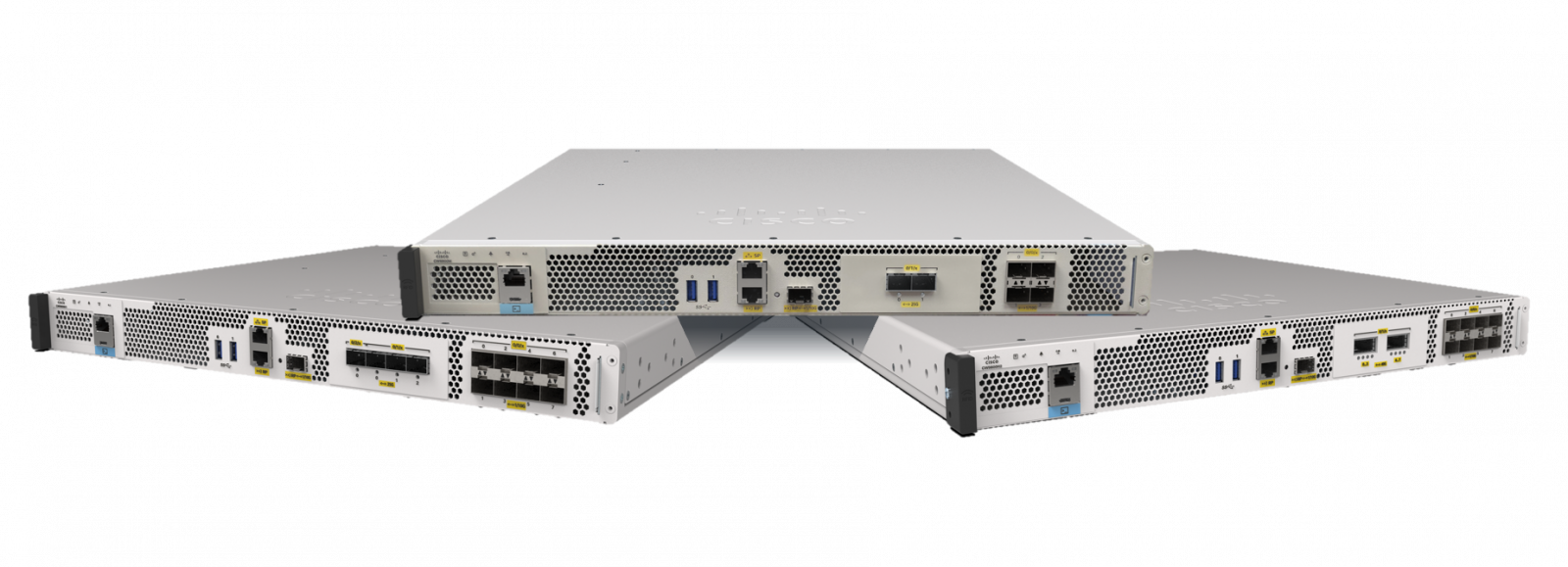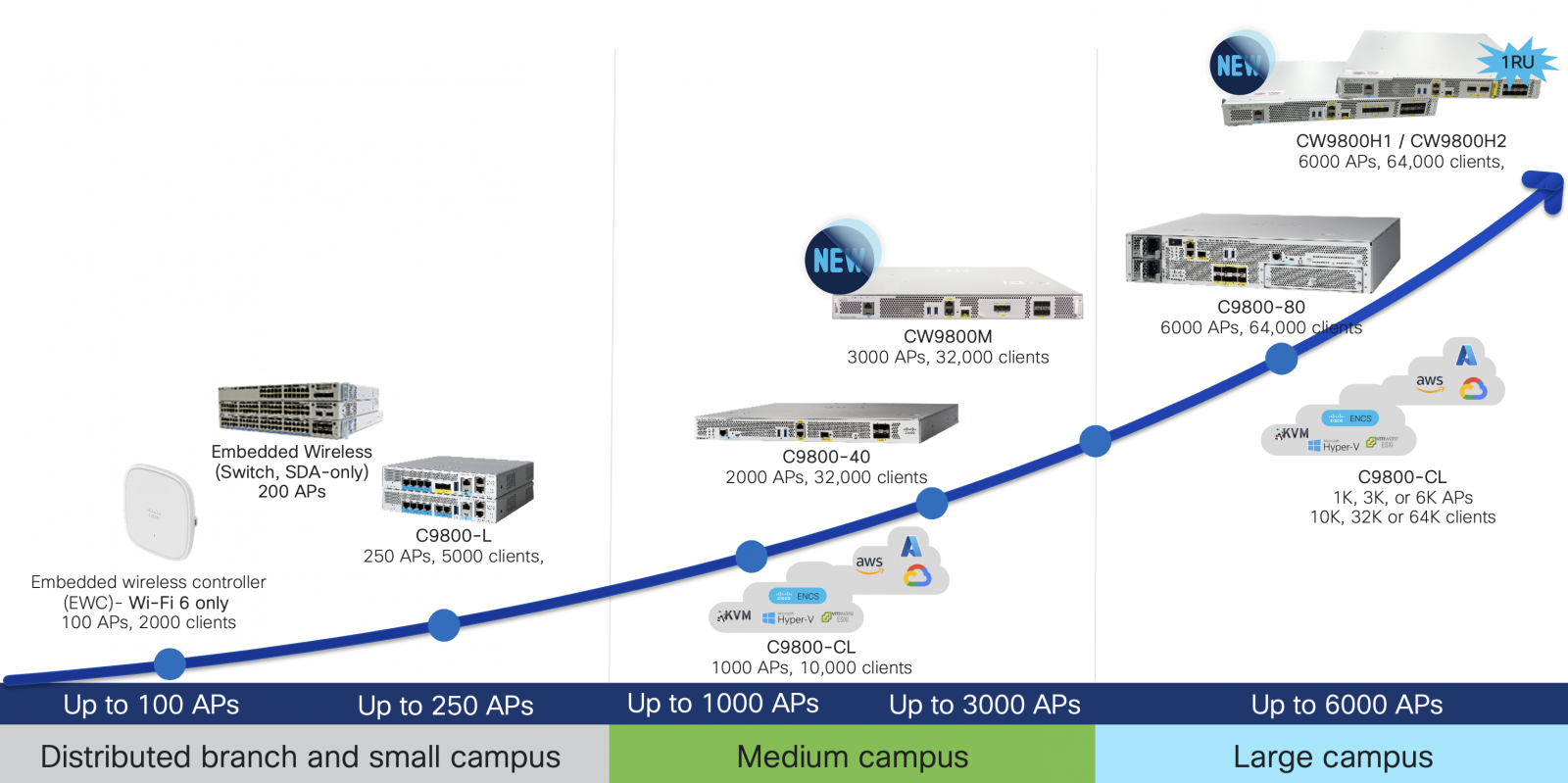
Cisco recognizes the importance of innovating for both cloud-based and on-premises customers. To support their on-premises customers, Cisco is introducing a new family of next-generation wireless controllers. The Cisco Catalyst CW9800M, CW9800H1 and CW9800H2 bring significant performance and efficiency gains over the previous generation of wireless controllers, while also reducing the form factor in the case of the CW9800H1 and CW9800H2.
My history with the Cisco Catalyst 9800
Prior to joining Cisco, I was fortunate to be invited to test the 9800 controllers more than six months prior to its public release in 2018. This gave me the opportunity to familiarize myself with the new design, as well as put it through its paces in my environment. My journey began with a bit of frustration, as I wrapped my head around the new configuration structure. What were all these tags and profiles, and how do I relate them to the AP Groups I knew and loved? Initially, I thought it was just change for the sake of change, but as I dove deeper and learned more about the design I realized there was a very good reason for the changes. The tags and profiles allowed configuration to be distributed in a way which allows it to scale better in large environments. The configuration is also much more flexible, allowing you to have a common WLAN configuration (which rarely changes from site to site) and move the commonly-changed items, such as client VLAN, ACLs, etc. to a separate Policy Profile. These profiles can be automatically assigned to APs based on their name by using AP Tag Filters. The more I dove in, the more I loved what I saw. My passion for the platform drove me to create training content for engineers and customers, in hopes that they could all have the same “aha moment” I had when I realized why the configuration structure had changed. I’ve deployed hundreds of 9800 wireless controllers since their introduction, migrating many customers from previous-generation AireOS wireless controllers. Years later, I’ve since joined Cisco and I am now the Product Manager responsible for the Catalyst 9800 Series hardware platforms, bringing you the new Cisco Catalyst CW9800M, CW9800H1 and CW9800H2 next-generation wireless controllers!
Cisco Catalyst 9800 Portfolio Overview

Cisco Catalyst CW9800M

The Cisco Catalyst CW9800M Wireless Controller will succeed the C9800-40 as the mid-scale controller in the line-up. In fact, the “M” in CW9800M stands for “Mid.” Some of this model’s highlights include:
- AP scale is increased 50% over the C9800-40, to 3,000 APs
- Up to 53% real-world performance improvement over the C9800-40
- Up to 18% more power efficient than the C9800-40
- 2x 25G uplink ports, as well as 4x 1/10G uplink ports
- 1G (copper) and 1/10G (SFP+) High Availability heartbeat ports allow for distributed deployments in data centers with and without 1G ports
- Hardware crypto offload enables line-rate encryption without performance degradation
Cisco Catalyst CW9800H1 and CW9800H2


The Cisco Catalyst CW9800H1 and CW9800H2 Wireless Controllers will succeed the C9800-80 as the high scale controllers in the line-up. The only difference between the CW9800H1 and CW9800H2 is the high-speed uplink ports. The CW9800H1 has 4x 25G ports and the CW9800H2 has 2x 40G ports, allowing a smooth transition for customers with the C9800-80 and the 40G module slot. Some feature highlights for these models include:
- Compact 1RU design
- Up to 36% real-world performance improvement over the C9800-80
- Up to 40% more power efficient than the C9800-80
- CW9800H1 has 4x 25G and 8x 1/10G uplink ports
- CW9800H2 has 2x 40G and 8x 1/10G uplink ports
- 1G (copper) and 1/10G (SFP+) High Availability heartbeat ports allow for distributed deployments in data centers with and without 1G ports
- Hardware crypto offload enables line-rate encryption without performance degradation
To avoid any confusion during deployments, I want to point out the interface numbering on the CW9800H1. You may already know that Cisco traditionally starts numbering the interface groups from right to left, with 0 on the right. Often, this goes completely unnoticed because the groups align with different port types. However, in the case of the CW9800H1 there is a bit of a quirk in the interface numbering. The 8x 1/10G ports are Te0/0/x, as you would expect. However, the 25G ports are split between two groups. The left-most 25G port is Twe0/2/1 and the other three ports are Twe0/1/x. The reason for this is due to how the ports are split between the multiple ASICs in the CW9800H1. A 10G port uses 1 lane and a 25G port uses 4 lanes. Each of the ASICs in the CW9800H1 supports 12 lanes. The first ASIC supports Te0/0/x (8 lanes) and Twe0/2/1 (4 lanes) and the second ASIC supports the remaining 3x 25G ports (Twe0/1/x) which use a total of 12 lanes. Practically speaking, none of this matters to the end user/administrator, but it may be confusing to see the left-most port as the highest numbered interface group on the controller. Hopefully this helps avoid any confusion during the initial staging of your CW9800H1.

Cisco Catalyst CW9800 Wireless Controller introduction at Mobility Field Day 11
This video starts at the CW9800 portion of the video, but if you are interested in Cisco’s AnyLocate feature, feel free to watch from the beginning!

One thought on “Introducing Cisco’s next-generation CW9800 wireless controllers”